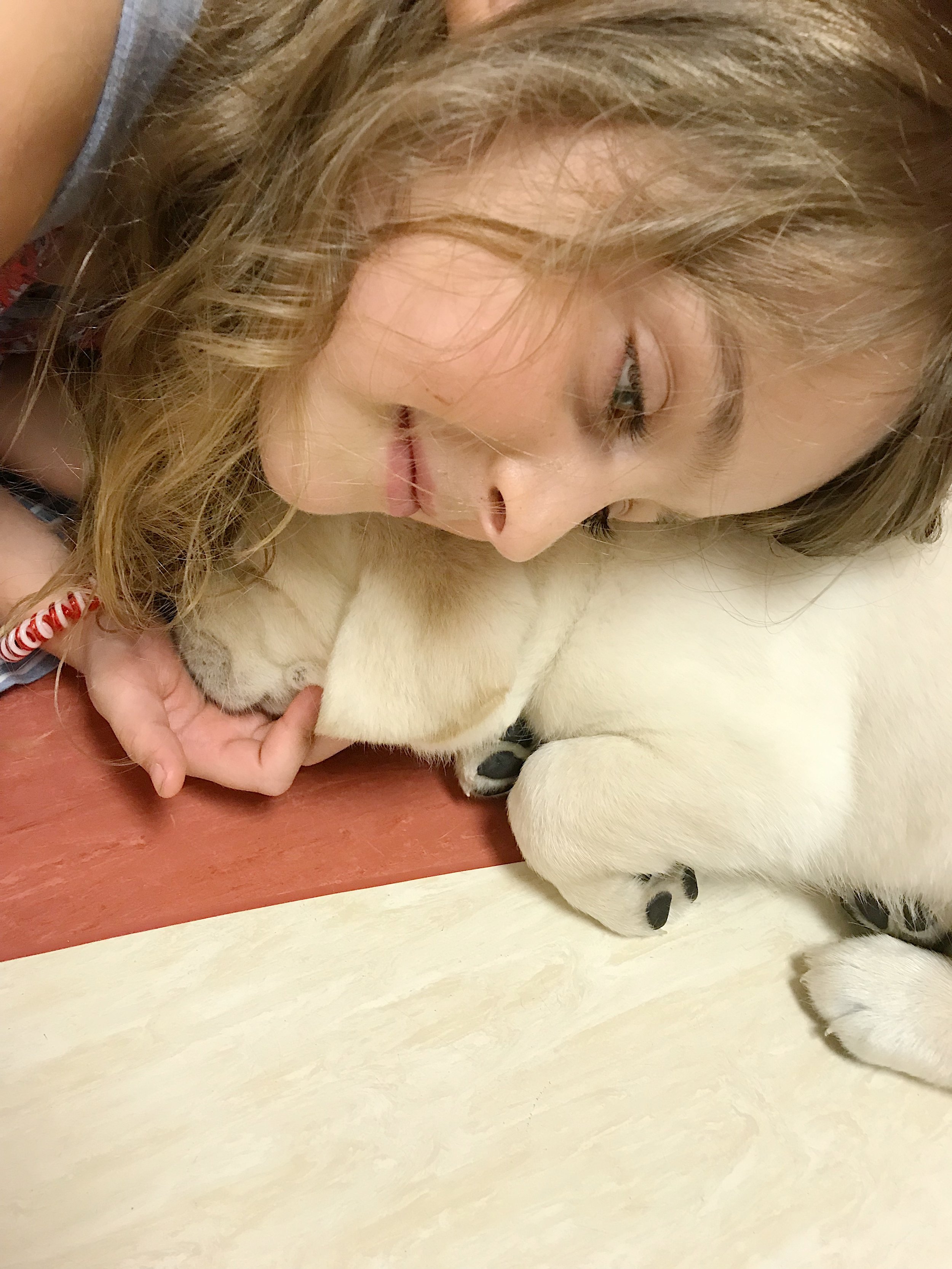Parvo: what you need to know
My daughter, Heidi, with our new puppy, Banks, at the Emergency Room.
If you follow me on social media, you know we have welcomed 2 new family members: Banks, a yellow lab puppy & Hemingway, a black lab puppy. We love them and are so excited, but within days of bringing them home they were both hospitalized with parvovirus. In talking to my friends and family I realized people do not really know much about this potentially deadly illness! So, I thought it was a good topic to discuss through my website and hopefully spread knowledge!
What is Parvo?
Parvo is the term given to the severe, contagious disease contracted when a dog comes into contact with the parvovirus. It causes inappetence, lethargy, vomiting, and liquid bloody diarrhea. The virus attacks the rapidly dividing cells of the gastrointestinal tract and causes an ileus or a standstill in gut motility. Puppies and young dogs who have not been fully vaccinated are at highest risk.
History
We are not exactly sure where canine parvovirus came from. Some think it developed from the feline panleukopenia virus or potentially from a similar parvovirus of non-domesticated animals. It is so widespread in our environment virtually every dog has been exposed at some point!
It is everywhere!
Parvovirus is a non-enveloped, single-stranded DNA virus resistant to most common disinfectants as well as changes in temperature and pH. It can survive indoors for months and outdoors for years. The virus is shed in the feces of infected dogs before clinical signs develop. This can be a period of days or even weeks. It continues to be shed while the puppy is sick and for days after recovery.
There is no cure
Since Parvo is caused by a virus, there is no cure. Treatment of dogs infected with parvovirus is based on supporting their immune system by keeping them hydrated (usually IV fluids), preventing vomiting, managing diarrhea, keeping the intestines fed (often requiring a feeding tube) and controlling any other disease processes such as intestinal worms. The mortality rate can reach 90% in puppies and unvaccinated dogs.
Vaccinate!
The good news is Parvo is prevented with vaccination. A puppy is considered fully vaccinated when they have had at least 3 parvovirus (usually combined in a shot with distemper) vaccines by 16 weeks of age. It is imperative that young dogs and puppies stay away from heavily trafficked areas such as dog parks and pet stores until they have finished all of their puppy vaccines.
Remember puppies have immature immune systems. If you have a puppy that does not feel well, turns his nose up at food, has an episode of vomiting or diarrhea it is so important they are examined by a veterinarian as soon as possible. Vaccinating puppies for parvovirus will save their life!
 – Leigh Hofmeister, DVM
– Leigh Hofmeister, DVM

